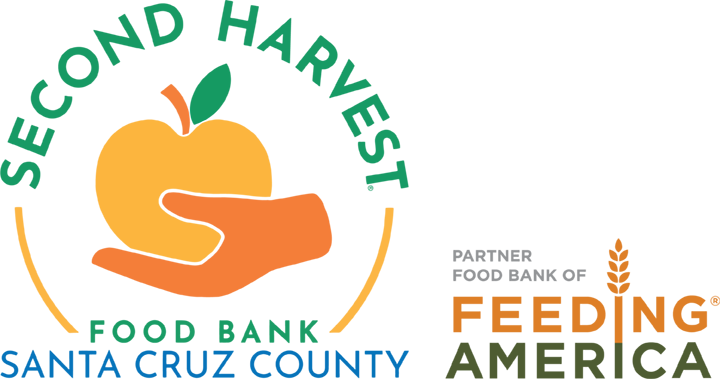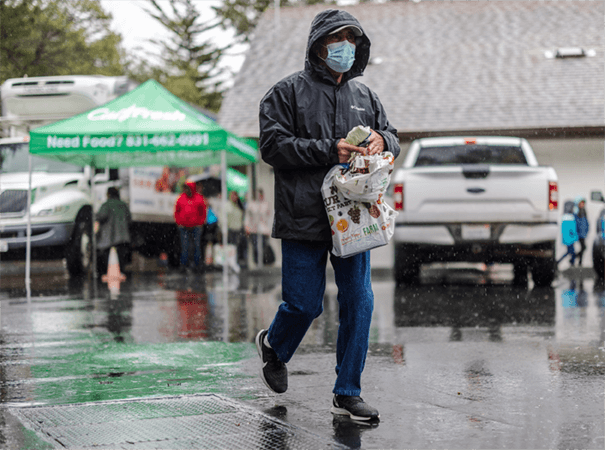SECOND HARVEST FOOD BANK ENCOURAGES ADVOCATING FOR MORE SUPPORT
Excerpt from The Pajaronian
by Tara Fatemi Walker
A Santa Cruz County resident and Second Harvest Food Bank client who received $281 per month in CalFresh benefits for more than two years saw those benefits decrease to $40 in April.
The woman, who asked not to be identified, says the recent ending of CalFresh Emergency Allotments means she may not be able to afford the special diet she needs to control her diabetes. She was also worried how she would make it through the end of the month with only $40.
“Now I will start going to food distributions more regularly, so I can get the food I need,” she said.
The CalFresh program, federally known as the Supplemental Nutrition Assistance Program (SNAP), is the largest social safety net program in Santa Cruz County, said Joel Campos, Community Outreach Manager at Second Harvest. According to the UC Santa Cruz BLUM Center, CalFresh provides 41.6% of all supplemental food assistance meals in the county.
“CalFresh gives an average of $184 in food assistance per person,” Campos said.
In March 2020, the federal government implemented Emergency Allotments due to the Covid-19 pandemic. It raised the CalFresh benefits to the maximum levels, which meant that every qualifying household received the highest benefit. For example, a family of one would receive $281, while a family of three $740.
However, at the end of 2022, Congress passed legislation—The Consolidated Appropriations Act—terminating these allotments, bringing people back to the CalFresh benefit amounts they qualified for before emergency programs.
“This policy change affected over 31,000 people or 20,315 households in Santa Cruz County, putting them at risk of food insecurity,” Campos said.
Most people received the last of their increased funding in March. The U.S. Department of Agriculture estimates that every family in Santa Cruz County noticed a reduction in their benefits of at least $95 per month. According to Food Research & Action Center, older adults experienced a steeper decline in their benefits. Monthly CalFresh/SNAP benefits for a single adult could fall as low as $23.
Campos estimates the policy change caused Santa Cruz County to lose $3,015,585 monthly in extra federal CalFresh benefits and lose nearly $5.5 million in local economic activity.
“While the loss of thousands of meals directly impacts Second Harvest Food Bank and the food safety net, there are ways that the community can help ease this pain,” Campos said.
The Food Bank encourages community members to advocate with state elected officials and support bills such as Senate Bill 600, which would raise the CalFresh minimum benefit from the current benefit amount of $23 per month to $50, and SB 348, which would ensure access to School Meals for All and Summer EBT starting in 2024, making sure children have the nourishment they need when schools are closed during the summer.
The loss of the Emergency Allotments will likely cause the food insecurity rate in the county to escalate, according to Second Harvest. The Food Bank is hosting extra activities during May, which is CalFresh Awareness Month.
Even though amounts have decreased, it’s important for those who qualify to apply for assistance.
To boost CalFresh participation, Second Harvest is staffing CalFresh assistance and information tables at events including two farmers markets: one in Watsonville and one in downtown Santa Cruz. People who already have CalFresh can utilize benefits at these markets plus others. A current “CalFresh Market Match” makes people’s CalFresh/EBT dollars go further. Extra tokens CalFresh clients receive are usable for fresh produce.
During the month of May, the Food Bank hangs a big banner on Watsonville’s Main Street promoting CalFresh awareness. It also distributes information through partners such as UCSC and posts messages on social media about several CalFresh myths and truths.
For example, owning a vehicle will not disqualify someone from CalFresh benefits, contrary to popular belief. Eligibility is based on income, not assets. Similarly, some mistakenly believe that you have to be unemployed.
On May 26, the Food Bank is holding the 11th annual CalFresh Forum, which brings together leaders and community members who are working to decrease food insecurity.
Anyone interested in increasing County CalFresh participation rates is welcome to attend. This event, at Twin Lakes Church, will include workshops and guest speakers. For details or to register, visit.
Second Harvest CEO Erica Padilla-Chavez will be updating the CalFresh community at this event, which is the first in-person CalFresh Forum since 2019.
“We are committed to increasing access to healthy food for all who live, work and play in Santa Cruz County, because we are all The Food Bank,” Padilla-Chavez said. “I look forward to having conversations with people and helping brainstorm opportunities for meeting the increased needs of our community.”
In 2022, the Food Bank helped people receive CalFresh food to make more than 986,000 meals. This number is based on the number of households who qualified for benefits after applying through Second Harvest.
For information, visit thefoodbank.org or call 722.7110.
We are the Food Bank

